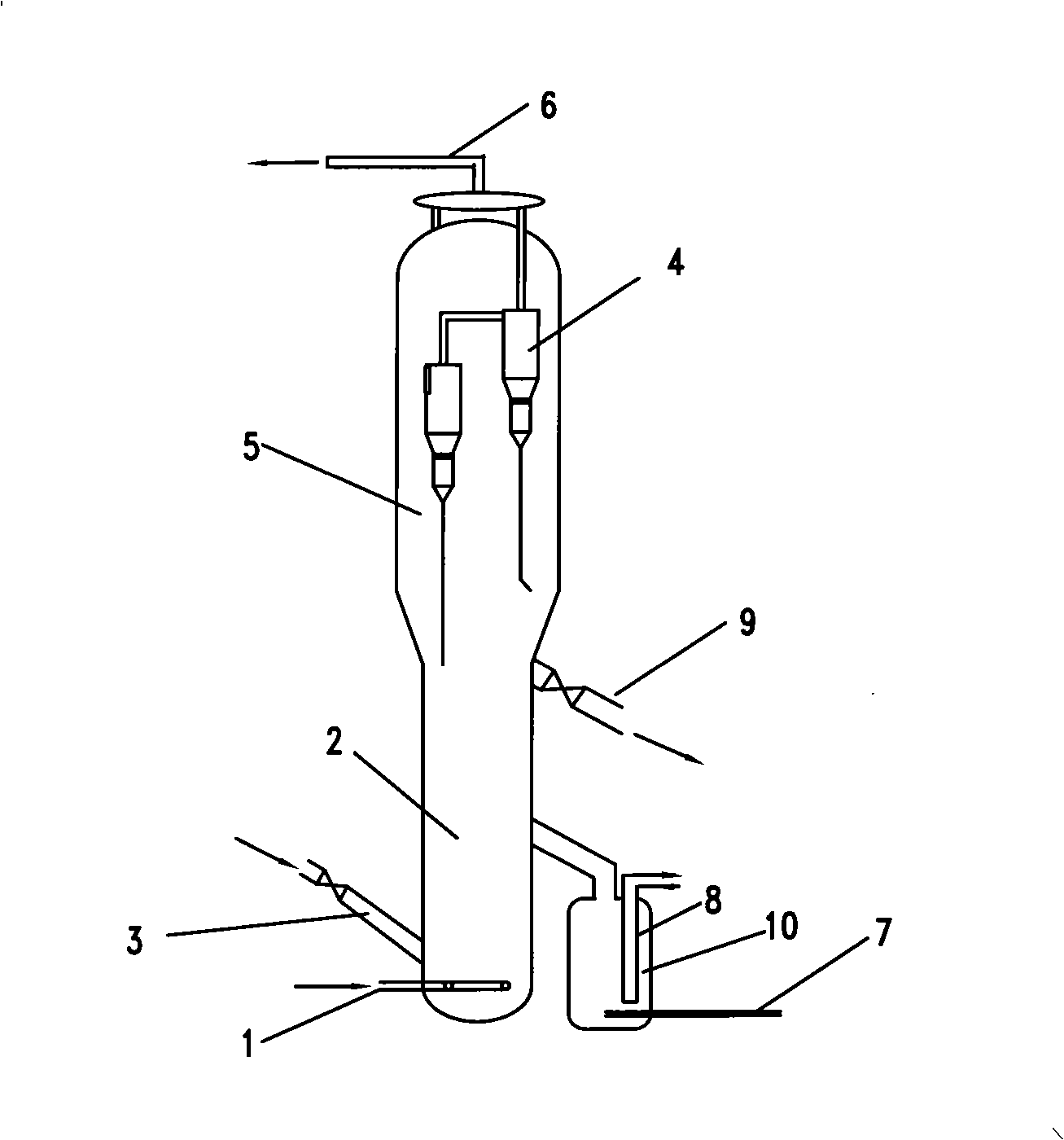Regeneration method for preparing light olefins catalyst from oxygen-containing compounds
A technology for low-carbon olefins and catalysts, which is applied in the field of regeneration of low-carbon olefins catalysts prepared from oxygen-containing compounds. It can solve problems such as temperature fluctuations in regenerators, achieve flexible control, and avoid CO tail combustion effects.
- Summary
- Abstract
- Description
- Claims
- Application Information
AI Technical Summary
Problems solved by technology
Method used
Image
Examples
Embodiment 1
[0017] In the small fluidized bed regenerator, the catalyst is SAPO-34 molecular sieve, the amount of coke deposited on the ungenerated catalyst belt is 4.5% by weight, the regeneration temperature is set at 700°C, the regeneration medium is air, and the inlet temperature of the regeneration medium is 300°C. The regeneration dense phase temperature and the fluidized medium flow rate of the external heat extractor of the regenerator adopt automatic cascade control, the fluidized medium of the external heat extractor of the regenerator is air, the heat exchange medium is water, and the oxygen concentration at the outlet of the regeneration dense phase area is 0.48% by volume , the loosening medium of the regenerator is air, the distance between the connection position of the regenerator external heat extractor and the regeneration dense-phase area and the bottom regeneration medium feed distributor is 1 / 2 the bed height of the regeneration dense-phase area, for three consecutive h...
Embodiment 2
[0019] In the small fluidized bed regenerator, the catalyst is SAPO-34 molecular sieve, the amount of coke deposited on the catalyst belt is 7.5% by weight, the regeneration temperature is set at 700°C, the regeneration medium is air, and the inlet temperature of the regeneration medium is 300°C. The regeneration dense phase temperature and the fluidized medium flow rate of the external heat extractor of the regenerator adopt automatic cascade control, the fluidized medium of the external heat extractor of the regenerator is air, the heat exchange medium is water, and the oxygen concentration at the outlet of the regeneration dense phase area is 0.44% by volume , the loosening medium of the regenerator is air, the distance between the connection position of the external heat extractor of the regenerator and the regeneration dense-phase area, and the bottom regeneration medium feed distributor is 1 / 3 of the bed height of the regeneration dense-phase area, for three consecutive ho...
Embodiment 3
[0021] In the small-scale fluidized bed regenerator, the catalyst is SAPO-34 molecular sieve, the amount of coke deposited on the ungenerated catalyst belt is 0.5% by weight, the regeneration temperature is set at 600°C, the regeneration medium is air, and the inlet temperature of the regeneration medium is 100°C. The regeneration dense phase temperature and the fluidized medium flow rate of the external heat extractor of the regenerator adopt automatic cascade control, the fluidized medium of the external heat extractor of the regenerator is air, the heat exchange medium is water, and the oxygen concentration at the outlet of the regeneration dense phase area is 0.35% by volume , the loosening medium of the regenerator is air, the distance between the connection position of the regenerator external heat extractor and the regeneration dense phase area and the regeneration medium feed distributor at the bottom is 1 / 4 of the bed height of the regeneration dense phase area, for thr...
PUM
 Login to View More
Login to View More Abstract
Description
Claims
Application Information
 Login to View More
Login to View More - R&D
- Intellectual Property
- Life Sciences
- Materials
- Tech Scout
- Unparalleled Data Quality
- Higher Quality Content
- 60% Fewer Hallucinations
Browse by: Latest US Patents, China's latest patents, Technical Efficacy Thesaurus, Application Domain, Technology Topic, Popular Technical Reports.
© 2025 PatSnap. All rights reserved.Legal|Privacy policy|Modern Slavery Act Transparency Statement|Sitemap|About US| Contact US: help@patsnap.com

